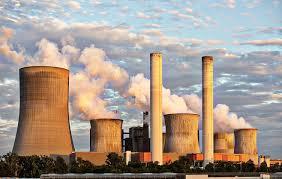Industrial Flue Gas Treatment Market Overview: Addressing Industrial Emissions through Innovation

The industrial flue gas treatment market is at the forefront of global efforts to reduce industrial air pollution and meet tightening environmental standards. As industrial operations generate significant emissions—ranging from sulfur dioxide (SO₂) and nitrogen oxides (NOₓ) to particulate matter and mercury—effective flue gas treatment systems are essential to minimize their environmental and health impacts. This article provides a detailed overview of the market, including its structure, major technologies, end-user industries, regulatory influence, and future prospects.
Market Definition and Scope
Industrial flue gas treatment involves a series of technologies and processes designed to remove harmful pollutants from exhaust gases generated during industrial combustion or processing activities. These technologies play a critical role in helping industries comply with emission regulations and reduce their ecological footprint.
The scope of the market extends across several core industrial sectors such as power generation (especially coal-based plants), cement production, metallurgy, chemicals, and waste incineration. These sectors are heavily regulated due to their significant contribution to air pollution, making them key adopters of flue gas treatment technologies.
Key Technologies in the Market
The industrial flue gas treatment market encompasses a variety of technologies, each tailored to address specific pollutants:
-
Flue Gas Desulfurization (FGD): Primarily used to remove sulfur dioxide (SO₂) from exhaust gases, FGD systems are widely adopted in thermal power plants. Wet, dry, and semi-dry methods are used depending on site-specific conditions and regulatory requirements.
-
Selective Catalytic Reduction (SCR): This technology is effective in reducing nitrogen oxides (NOₓ) by converting them into nitrogen and water using a catalyst and ammonia or urea. SCR is often used in conjunction with FGD systems.
-
Electrostatic Precipitators (ESPs): ESPs are used to remove fine particulates and dust from flue gas using electrostatic force. They are commonly employed in cement and steel industries.
-
Baghouse Filters: These fabric filters are used for capturing fine particles and are especially popular in cement and biomass power plants.
-
Activated Carbon Injection (ACI): ACI is used for the removal of mercury and other heavy metals, often in waste incineration and power generation applications.
Regulatory Landscape
Regulations are the primary driving force behind the industrial flue gas treatment market. Governments and environmental bodies across the globe are tightening emission standards to reduce the impact of industrial air pollution on public health and the environment.
In North America, the U.S. Environmental Protection Agency (EPA) enforces the Clean Air Act, which sets strict emission limits for various industries. The European Union’s Industrial Emissions Directive (IED) mandates the use of Best Available Techniques (BAT) to limit emissions. In Asia, countries like China and India have introduced national policies to control air pollution, including mandates for installing FGD and SCR systems in power plants and large manufacturing units.
These regulations have turned emission control into a mandatory investment rather than an optional measure for industrial players.
Market Dynamics and Trends
The market is characterized by several dynamic trends:
-
Shift Toward Multi-Pollutant Solutions: Companies are increasingly adopting integrated systems that treat multiple pollutants in a single unit, enhancing efficiency and reducing capital expenditure.
-
Digitalization and Automation: AI-based emission monitoring, IoT-enabled control systems, and predictive maintenance technologies are making flue gas treatment more intelligent and cost-effective.
-
Retrofitting of Existing Plants: As emission norms become more stringent, aging facilities are being retrofitted with modern flue gas treatment systems instead of being shut down, driving demand for aftermarket services.
-
Rising Environmental Awareness: Beyond regulatory compliance, industries are investing in cleaner technologies to align with ESG (Environmental, Social, Governance) objectives and corporate sustainability goals.
Competitive Landscape
The industrial flue gas treatment market features a mix of global leaders and regional specialists. Major players include:
-
Mitsubishi Hitachi Power Systems
-
General Electric
-
Babcock & Wilcox Enterprises
-
Andritz AG
-
Ducon Technologies
These companies offer comprehensive systems and services, including system design, installation, maintenance, and retrofitting. Competitive strategies include product innovation, strategic partnerships, and expansion into high-growth regions such as Asia-Pacific and the Middle East.
Regional Overview
-
Asia-Pacific: The largest and fastest-growing region, driven by rapid industrialization, especially in China and India. Stringent air quality regulations are spurring large-scale installations of FGD and SCR systems.
-
North America & Europe: These mature markets focus on system upgrades and replacements. Strong enforcement of environmental laws ensures stable demand.
-
Latin America, Middle East & Africa: These are emerging markets with growing interest in industrial emission control. Infrastructure expansion and environmental awareness are likely to boost market growth over the next decade.
Future Outlook
The future of the industrial flue gas treatment market is shaped by three converging factors: stricter regulations, rapid technological innovation, and the global sustainability movement. The market is expected to see robust growth as industries increasingly adopt advanced emission control systems to meet compliance, improve operational efficiency, and demonstrate environmental responsibility.
Moreover, governments are likely to introduce additional incentives and carbon control mechanisms, further accelerating the adoption of flue gas treatment technologies. As innovation continues and awareness deepens, the market will play a vital role in the transition to a cleaner, healthier industrial environment.
Conclusion
The industrial flue gas treatment market stands as a critical component in global pollution control efforts. Its growth is fueled by regulatory pressure, evolving technologies, and the increasing emphasis on sustainability. As industrial operations expand worldwide, the demand for efficient, integrated, and intelligent emission control systems is set to grow, reinforcing the market's importance in a greener industrial future.
- Art
- Causes
- Crafts
- Dance
- Drinks
- Film
- Fitness
- Food
- Games
- Gardening
- Health
- Home
- Literature
- Music
- Networking
- Other
- Party
- Religion
- Shopping
- Sports
- Theater
- Wellness


